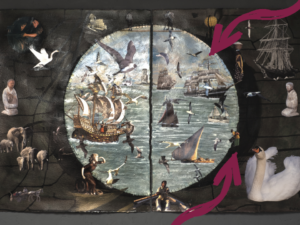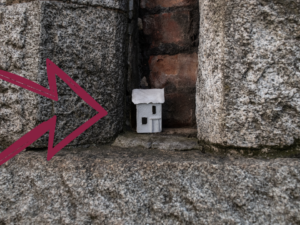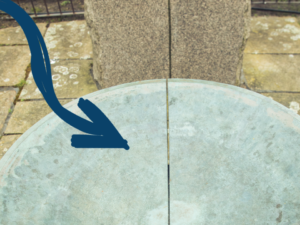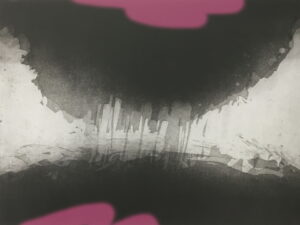
When partners and friends The Institute of Irish Studies (University of Liverpool) confirmed they’ d secured an artist-in-residence for 2022, we were thrilled.
When they confirmed it was Fion Gunn -who we knew as a peer from our Tate Exchange days- we were ecstatic. Thought-provoking, political, intense and emotive, Fion’s work taps in to so many aspects of our work, that she has even predicted future theme years with her title Arrivals/Departures. As Fion’s residency has developed, we have had rich conversations, introduced one another to new artists and experienced deep empathies for shared and disparate histories, longings and motivations. Here, Fion talks of her family’s connections with the Irish Famine and how connections in to heritage drives her work.
Arrivals/Departures
Many people, particularly in the UK, think of history as an account of brave British men (and a handful of women) who’ve left a legacy; who built an Empire; won wars (usually); fought the Nazis and championed democracy. This is ‘big history’ that gets written in books, studied at school and becomes the core national/nationalist identity.
I grew up in Cork (Ireland) and although there were many broad strokes in the history we studied at school, it was a more nuanced and more complex affair. There were so many ambiguities in Ireland’s relationship to Empire; so many divisions within the population that tribal loyalties often mattered more to people than abstract ideas of nationhood.
History
Yet the history that has always fascinated me was the stuff that happened to all the ordinary people. The people who lived their lives often unaware of the wider picture, until they brushed up against it or were destroyed by it.
Three of my four grandparents were members of the IRA. One of my grandfathers was a marksman; a professional revolutionary. He fought in the Spanish Civil War, participated in the long March in China and was excommunicated from the Catholic church. He was a lifelong Bolshevik. Hatred of the English was a family mantra and yet, when I married an Englishman, none of that antipathy was in evidence so the hatred wasn’t ‘personal’.
Themes
A core theme running through Arrivals/Departures -my solo exhibition at Victoria Gallery and Museum (Liverpool)- is the experience of ‘diaspora’. Diasporas don’t arise out of nothing. People disperse because they desperately need to move away to escape conflict, poverty and -in the case of Ireland’s greatest migration- famine.
As a child in sixties Ireland, poverty was never beyond reach. Many family stories connected with those terrible famine times, with the usual -and some unusual- touch points.
Paternal lines
My father’s grandmother’s mother (my paternal great-grandmother) was seven-years-old when her father died of famine fever in 1846, in Tuam (County Galway). She told her daughter what she remembered, who in turn told her children and grandchildren: her father being dressed in black clothes and laid out on the kitchen table. They can’t have been the poorest; he had clothes and they had a table… Surrounded by death and hunger in her youth, she suffered with nightmares throughout her life; most members of her family emigrated to America, one to Cork. Those who remained worked as skilled or unskilled labourers. My paternal grandfather worked as a butcher, a nightmare occupation to my mind (I wanted to be vegetarian from the age of four!).
Maternal lines
My maternal family was better off and lived in the centre of the city, owning various shops on a block of Cornmarket Street/Coal Quay and living above them. In other words, they had diverse sources of income and were able to buy food other than the potatoes on which most poorer people relied. My grandmother’s grandmother was another seven-year-old in 1846. Her experience, of the horror of the time, gives a different perspective.
One afternoon she looked out the sitting room window on the first floor -the same place where I spent my childhood hours looking out on horses pulling carts from Murphy’s Brewery– to see cartloads of bodies being hauled along the street. She was so horrified that she knelt down on the settee, straight onto a pile of her mother’s embroidery. A needle pierced her knee and then broke. Bearing in mind that there were no antibiotics, no anaesthetics and questionable general hygiene, this minor injury could rapidly prove fatal.
However, her grandmother -who was a child at the time of the French Revolution (I love that in any family one can reach out and touch big history)- had a remedy. She put a living snail on top of the puncture wound and wrapped the knee in a bread poultice. The following morning, when the poultice was removed, the snail had sucked the piece of needle from the knee and there were no further complications. Nobody mentioned what happened to the snail.
Perspectives
This story may seem a trivial one, but apart from shedding light on folk medicine in nineteenth century Ireland, it is also the perspective of a child who never forgot the horror of seeing what so many, less fortunate Irish people, had suffered. The overwhelming destruction of their very existence.
When I make artwork, I want to include those intimate glimpses, the asides, the complexities, the granular detail. It is a way of countering reductive narratives, written by ideologues. It is a way of making place for others and respecting their lives.
Arrivals/Departures does not focus specifically on the Irish Famine, but it explores the experience of diaspora, displacement, migration, identity; of belonging and what we do with our cultural heritage.
Arrival/Departures runs at the Victoria Gallery and Museum from 30 Jul-30 Dec 2022. It is free to attend during opening hours. We all recommend accessing the Arrivals/Departures application on Apple and Google stores for a free AR experience, too.
Fion was also kind enough to introduce us to Pam Sullivan, whose guerrilla exhibition The Forgotten can be seen across the Festival. Pamela’s article can be seen here.



